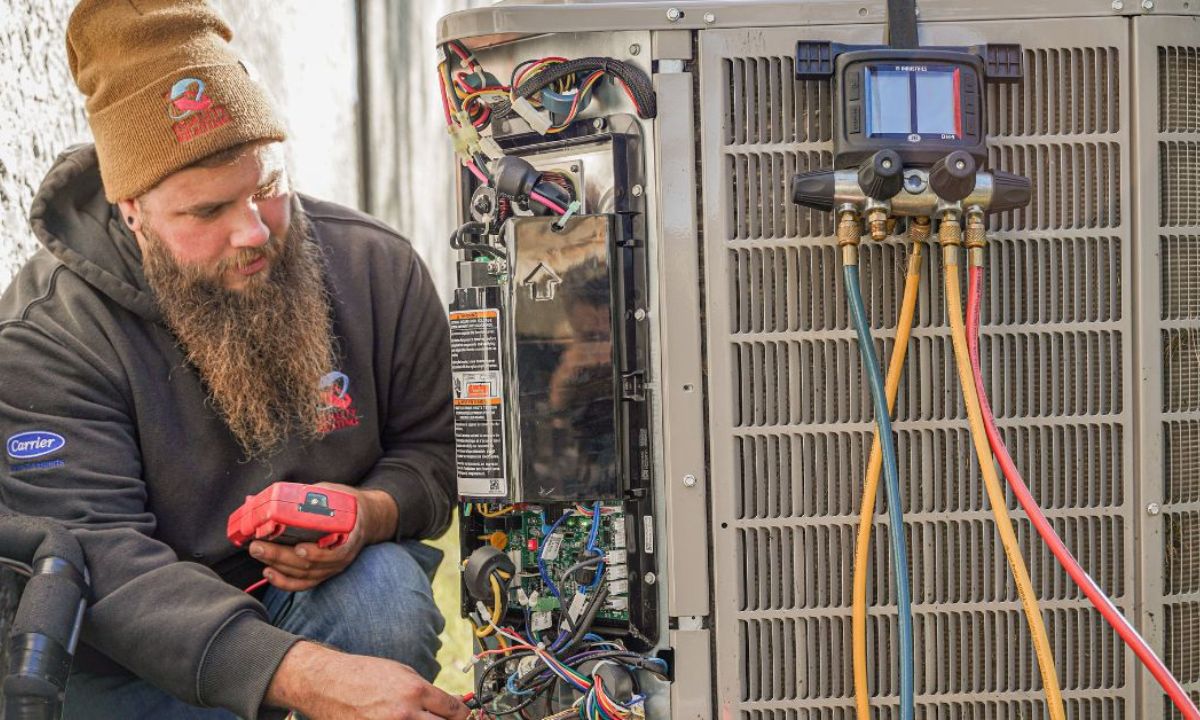General
Drive Social Media Pyramid Scheme: The Dark Side of Influence

drive social media pyramid scheme is a deceptive business model where participants earn money primarily by recruiting others into the scheme rather than by selling actual products or services. These schemes often disguise themselves as legitimate multi-level marketing (MLM) opportunities but lack sustainable business practices.
How These Schemes Operate Online
drive social media pyramid scheme, these schemes flourish because they leverage popularity and trust. Typically, a promoter will show off a lavish lifestyle—cars, vacations, designer clothes—and claim it’s all thanks to a “business opportunity.” Followers are then invited to join, with the promise of similar wealth. But the catch? You must pay to enter and then recruit others to earn.
Why People Fall for It So Easily
People are drawn in by the illusion of quick money and financial freedom. In a world where side hustles are glamorized, it’s easy to believe you’ve found a golden ticket. The fear of missing out (FOMO) adds pressure, especially when influencers show success that seems achievable. The scam is wrapped in hope.
Tactics Scammers Use to Lure Followers
Scammers use urgent language, flashy testimonials, and constant flexing. They create exclusive groups, often on Instagram or Facebook, where peer pressure plays a major role. Some use buzzwords like “boss babe,” “financial freedom,” and “be your own boss” to draw people into the dream.
The Psychology Behind the Scheme
These schemes manipulate basic psychological triggers. They exploit your desire to belong, your ambition, and your need for security. When someone you admire appears to succeed and invites you in, it feels personal—even though it’s not. That emotional connection overrides logic.
Red Flags to Watch Out For
There are warning signs. If the opportunity requires an upfront payment with no clear product, that’s a red flag. If you’re pressured to recruit others to earn money, that’s another. Vague business models, overly positive testimonials, and secrecy about the structure are all red flags.
Difference Between MLMs and Pyramid Schemes
Not all MLMs are pyramid schemes, but many walk a fine line. MLMs sell products and reward sales, while pyramid schemes focus solely on recruitment. If the company makes more from new sign-ups than product sales, it’s likely a pyramid in disguise.
How Social Media Amplifies the Damage
Social media gives scammers a megaphone. A single post can reach thousands, if not millions. It also adds a layer of social proof. When you see your friends or influencers promoting the scheme, it gains unearned credibility. The reach and trust are toxic together.
Common Platforms Used by Pyramid Scammers
Instagram, TikTok, and Facebook are the top platforms used. Visual content allows scammers to showcase lifestyles that appear real but are often staged. Instagram Stories and TikTok videos create a sense of immediacy, pushing people to act quickly without thinking.
The Legal Risks Involved
Running or participating in a pyramid scheme can result in hefty fines and even jail time. Governments around the world are cracking down on these schemes, especially when they cross borders and use deceptive marketing. Even if you’re unknowingly involved, you could face consequences.
Impact on Victims
Victims often lose their initial investment and feel betrayed. Beyond financial loss, the emotional toll can be heavy. People feel embarrassed, ashamed, and distrustful of future opportunities. Relationships can suffer, especially when friends or family are involved.
Why Influencers Often Promote These Schemes
Some influencers are victims themselves, believing in what they’re promoting. Others do it knowingly, chasing high commissions. Influencers have a unique ability to make scams look legitimate, especially when they combine charm, relatability, and luxury aesthetics.
How to Protect Yourself
Research is your best defense. Check for business registration, read reviews, and consult forums like Reddit for real experiences. Ask hard questions: What are you selling? How do you earn? Can you get a refund? If it feels shady, it probably is.
What to Do If You’ve Been Scammed
First, stop recruiting others. Gather all communication and receipts. Report the scam to platforms, the Federal Trade Commission (FTC), or equivalent agencies in your country. Seek legal help if needed. And most importantly, talk about it—your story could save someone else.
Steps Social Media Platforms Should Take
Platforms need to enforce stricter guidelines and monitoring. Algorithms should not promote content flagged for misleading practices. Transparency reports and educational campaigns can also help users recognize scams before it’s too late.
The Importance of Digital Literacy
Understanding how online scams work is now a life skill. Schools, workplaces, and communities must educate people about digital traps. A more informed audience is a less vulnerable one.
How Real Businesses Differ
Real businesses are upfront about their products, returns, and structure. They don’t require recruitment to make money. They offer real value—skills, services, or goods. If the business stands without constant new sign-ups, it’s likely legit.
Should Pyramid Schemes Be Criminalized Globally?
Absolutely. Uniform laws would make it harder for scammers to jump between countries. When scams go international, victims are harder to protect. Global cooperation can close the loopholes.
The Role of Community in Fighting These Scams
Communities can share warnings, offer support, and raise awareness. A victim-centered approach encourages people to come forward. When we normalize talking about scams, we make it harder for scammers to thrive.
Conclusion
Social media pyramid schemes are digital wolves in sheep’s clothing. They prey on dreams, emotions, and trust, wrapped in the glitter of likes and follows. Staying alert, informed, and skeptical is the only way to avoid falling into their trap. Don’t be blinded by the glitz—question everything.
FAQs
Can I get my money back from a social media pyramid scheme?
In some cases, yes. If the scheme is reported and shut down, authorities may attempt to recover funds. However, recovery is never guaranteed.
Are all MLMs bad or illegal?
No, not all MLMs are illegal. But if the business model relies more on recruitment than product sales, it’s suspect.
How do I report a pyramid scheme on social media?
Use the platform’s reporting features and also report to your local consumer protection agency or the FTC.
What are safer alternatives to earn money online?
Freelancing, affiliate marketing with trusted brands, e-commerce, and online teaching are all legitimate options.
Why don’t platforms ban these schemes faster?
Due to the sheer volume of content and the often subtle tactics used, it’s hard for platforms to detect every scam. Stronger AI moderation and user reports help, but enforcement is still evolving.
General
Classroom 20X: The Future of Modern Education Unveiled

In the rapidly evolving educational landscape, Classroom 20X represents a significant leap forward, integrating advanced technology, innovative teaching methods, and student-centered learning approaches. This futuristic concept is designed to enhance learning experiences by embracing digital transformation, artificial intelligence, and interactive environments. Let’s dive into what makes Classroom 20X the next big revolution in education.
What Is Classroom 20X?
Classroom 20X is a term used to describe the modern, technology-driven learning environment that focuses on engagement, collaboration, and personalization. Unlike traditional classrooms, this model incorporates smart technology, digital tools, and flexible learning methods to improve education quality and accessibility.
Key Features of Classroom 20X
Classroom 20X stands out due to its unique features that redefine education. From smart boards to AI tutors, everything is designed to enhance learning efficiency and adapt to individual student needs.
Technology Integration in Classroom 20X
Technology plays a central role in Classroom 20X. Smartboards, interactive projectors, and cloud-based learning platforms ensure that students receive real-time feedback and personalized instruction. AI-powered chatbots and virtual assistants further enhance the learning experience by providing instant help and guidance.
Personalized Learning Experience
Unlike the one-size-fits-all approach of traditional classrooms, Classroom 20X focuses on adaptive learning, tailoring lessons to students’ strengths and weaknesses. AI-driven platforms analyze student performance and adjust content accordingly, ensuring better comprehension and retention.
Blended Learning Model
Classroom 20X embraces a blended learning approach, combining online and offline instruction. Students can access digital resources, attend virtual classes, and participate in hands-on projects, making education more interactive and engaging.
Collaboration and Teamwork in Learning
The future classroom promotes collaborative learning, allowing students to work on projects, share ideas, and solve problems together. Cloud-based tools like Google Classroom and Microsoft Teams facilitate seamless communication between students and teachers.
AI and Machine Learning in Education
AI is transforming how students learn by offering customized study plans, automated grading, and intelligent tutoring systems. Machine learning algorithms analyze student behavior and predict areas where they need additional support.
Virtual Reality (VR) and Augmented Reality (AR) in Learning
Virtual and augmented reality technologies make learning immersive and engaging. Students can explore historical events, conduct virtual science experiments, or even practice real-world skills in a simulated environment.
Gamification and Interactive Learning
Gamification elements like badges, rewards, and leaderboards keep students motivated. Interactive quizzes, simulations, and storytelling make learning fun and engaging, helping students retain information more effectively.
Smart Classrooms and IoT Devices
Classroom 20X leverages the Internet of Things (IoT) to create intelligent learning spaces. Smart sensors adjust lighting and temperature, while digital attendance systems and AI-powered security ensure a safe and efficient environment.
The Role of Teachers in Classroom 20X
Teachers act as facilitators rather than traditional instructors. With the help of AI-driven tools, they can focus on mentoring, providing individual guidance, and fostering critical thinking and creativity among students.
Student-Centered Learning Approach
Classroom 20X shifts the focus from passive listening to active participation. Students take charge of their learning journey through self-paced courses, project-based learning, and peer-to-peer collaboration.
Data-Driven Decision-Making in Education
Education analytics play a crucial role in tracking student progress, identifying learning gaps, and optimizing teaching strategies. Schools and educators use data to personalize instruction and improve overall academic performance.
Remote and Hybrid Learning Opportunities
Classroom 20X is designed to support remote learning, ensuring that students can access education from anywhere. Hybrid learning models allow students to switch between physical and virtual classrooms, promoting flexibility and inclusivity.
Benefits of Classroom 20X for Students and Educators
Enhanced Engagement: Interactive tools keep students actively involved.
Personalized Learning: AI adapts to individual needs.
Improved Collaboration: Teamwork and peer interaction are encouraged.
Greater Accessibility: Education reaches students beyond classroom walls.
Efficient Teaching: AI-powered tools assist teachers in lesson planning and grading.
Challenges and Solutions in Implementing Classroom 20X
Despite its advantages, implementing Clas’sroom 20X comes with challenges such as high costs, digital divide, and resistance to change. However, funding initiatives, teacher training, and affordable technology can help overcome these hurdles.
Final Thoughts
Class’room 20X is set to redefine education, making learning more dynamic, inclusive, and efficient. With continuous advancements in technology and teaching methodologies, the future of education looks brighter than ever.
FAQs
What is the main goal of Classr’oom 20X?
Classr’oom 20X aims to create a tech-driven, student-centered learning environment that enhances engagement, collaboration, and personalization.
How does AI help in Classr’oom 20X?
AI provides personalized learning experiences, automated grading, and real-time feedback, making education more efficient.
What technologies are used in Classr’oom 20X?
Classroom 20X incorporates AI, VR, AR, IoT, cloud computing, and gamification to create an immersive learning experience.
Can Class’room 20X be implemented in all schools?
While some schools may face budget constraints, gradual implementation through affordable tech solutions can make it accessible to many institutions.
Is Classr’oom 20X suitable for all age groups?
Yes, Classr’oom 20X can be adapted for primary, secondary, and higher education, providing age-appropriate digital learning experiences.
General
adsy.pw/hb3 URL Shortener Guide: Benefits & Insights

adsy.pw/hb3 appears to be a link generated by a URL shortener platform known as Adsy.pw. These types of shortened URLs are commonly used in digital marketing, affiliate campaigns, and online content sharing. They help to mask long URLs, making links cleaner, easier to manage, and often trackable for analytics purposes.
What is Adsy.pw?
Adsy.pw is a free URL shortener that allows users to generate concise links from long, messy URLs. In the digital age, short links are incredibly useful—especially on platforms with character limits like Twitter or when sharing promotional links in email marketing.
Purpose of Shortened URLs
Shortened URLs like adsy.pw/hb3 serve multiple purposes. Not only do they make links look cleaner, but they also provide a better user experience. Shortened URLs are easier to remember and type, and they can redirect users to affiliate pages, landing pages, or hidden content without revealing the destination upfront.
Advantages of Using adsy.pw/hb3
One of the major advantages of using adsy.pw/hb3 is analytics. URL shorteners like Adsy.pw offer tracking features. This means the user who generated the link can monitor how many people clicked it, when, and from which location. This is extremely valuable for marketers tracking campaign performance.
Link Masking for Better Engagement
Masking a link with a shortener like adsy.pw/hb3 can help increase click-through rates. Long, cluttered links often look suspicious and discourage users from clicking. A short and neat URL tends to look more professional and trustworthy, especially if embedded in social media posts or blogs.
Enhancing Affiliate Marketing with adsy.pw
Affiliate marketers benefit significantly from URL shorteners. Instead of sharing long, complex affiliate URLs, they can share shortened links like adsy.pw/hb3 that are less intrusive and more appealing to potential customers. Additionally, it allows affiliates to track how well their links are converting.
Boosting Social Media Campaigns
In social media, space is limited. Platforms like Twitter enforce character limits that make lengthy links a problem. adsy.pw/hb3 shortens links to fit within these constraints while still guiding users to the right content. This boosts campaign performance by maintaining clarity and focus.
Improved User Experience
A user-friendly experience often begins with something as simple as a clean link. adsy.pw/hb3 is easy to click, share, and remember, which improves the overall digital journey for end users. Nobody wants to deal with a confusing or intimidating wall of text as a URL.
Tracking and Analytics Capabilities
Analytics are a game-changer in digital strategy. adsy.pw/hb3 likely comes with built-in metrics such as unique clicks, bounce rate, and geographic location of visitors. These metrics allow businesses to optimize their marketing approaches based on user behavior and engagement.
Security and Transparency Concerns
While URL shorteners are useful, they sometimes raise concerns. Because they obscure the final destination, some users may hesitate to click on them. This is why adding context around links or using branded shorteners can enhance trust. adsy.pw/hb3 should be accompanied by a clear call-to-action or preview.
Integration with Marketing Tools
Marketers can easily integrate shortened URLs like adsy.pw/hb3 with email campaigns, paid ads, or influencer content. This simplifies link management across campaigns and ensures tracking consistency. Most platforms that support Adsy.pw provide export features and allow API integration.
Shortened Links in Email Campaigns
In email marketing, long links can trigger spam filters or break when passed through multiple email clients. Shortened links are more email-friendly. adsy.pw/hb3 ensures the link structure stays intact while making the email more visually appealing and concise.
Using adsy.pw/hb3 for Content Monetization
Some link shorteners, including Adsy.pw, offer monetization features. This means that the link creator can earn money each time someone clicks their shortened link. If adsy.pw/hb3 is monetized, it could serve dual purposes: sharing information and generating passive income.
Best Practices for Using adsy.pw/hb3
To get the most out of adsy.pw/hb3, always provide context. Let users know what they’re clicking. Use it in places where you can follow up with more content. Avoid spammy behavior. Track performance regularly and optimize your approach based on the analytics data.
User Reviews and Community Feedback
Users often highlight the convenience and speed of tools like Adsy.pw. While some may be skeptical about shortened URLs, many digital marketers vouch for their effectiveness. Reviews suggest that links like adsy.pw/hb3 work well when shared responsibly and ethically.
Conclusion
adsy.pw/hb3 is more than just a shortened URL—it’s a powerful digital tool. Whether you’re a marketer, a blogger, or a casual content sharer, this kind of link simplifies your job. It keeps your messaging clean, trackable, and often more effective. Just remember to use it smartly, ethically, and always with your audience’s trust in mind.
FAQs
Is adsy.pw/hb3 a safe link to click?
Yes, if shared by a trustworthy source. However, always hover over or preview shortened links when in doubt.
Can I track how many people clicked on adsy.pw/hb3?
If you’re the creator of the link, Adsy.pw provides analytics for tracking clicks, sources, and more.
Is adsy.pw/hb3 a permanent link?
Most shortened URLs remain active unless deleted by the user or removed for violating terms of service.
Can adsy.pw/hb3 be customized?
Some URL shorteners allow customization. Check Adsy.pw’s features to see if you can personalize your link ending.
Is using adsy.pw for monetization worth it?
Yes, especially for bloggers and content creators who generate consistent traffic. However, results vary based on audience size and niche.
General
Common HVAC Problems That Require Professional Technician Attention

Maintaining a comfortable indoor environment is largely dependent on the performance of your HVAC system. When heating, ventilation, or air conditioning units start to malfunction, it can lead to discomfort and potential damage to your home’s infrastructure. While homeowners can handle some minor issues, many HVAC problems need the careful attention of a trained technician to ensure safety, efficiency, and long-term system health. We will explore some of the most frequent issues that signal the need for professional intervention and how addressing them promptly can save time, money, and frustration.
Common HVAC Issues That Need Professional Help
- Inconsistent Temperature or Poor Airflow
When your HVAC system struggles to maintain a consistent temperature throughout your home, or if certain rooms feel warmer or cooler than others, it often points to airflow problems. This can stem from clogged air filters, blocked vents, or ductwork that has developed leaks or disconnections. Restricted airflow forces the system to work harder, which can lead to premature wear and increased energy costs. While changing air filters is a straightforward task, diagnosing duct leaks or balancing airflow typically requires a local HVAC technician team with tools designed to locate hidden issues and restore proper air circulation.
- Unusual Noises From the System
Strange noises, such as grinding, squealing, banging, or rattling, coming from your HVAC unit are often signs of mechanical trouble. These sounds can indicate worn bearings, loose components, or motor problems. Ignoring these noises can lead to severe damage, such as a motor burnout or broken fan blades. Professional technicians are equipped to open the unit safely, identify the source of the noise, and perform necessary repairs or part replacements. Addressing noisy HVAC systems early helps avoid costly breakdowns and maintains a quieter, more comfortable home environment.
- Frequent Cycling On and Off
If your heating or cooling system is turning on and off more frequently than usual, this short cycling can signal underlying problems. Short cycling not only reduces system efficiency but also increases wear on key components. Causes can range from a malfunctioning thermostat and refrigerant issues to an oversized HVAC unit for your home. Diagnosing why the system cycles improperly requires technical knowledge and specialized diagnostic tools. Professional technicians can adjust system settings, check refrigerant levels, or recommend equipment modifications to restore smooth, energy-efficient operation.
- Refrigerant Leaks
For air conditioning units and heat pumps, refrigerant is vital for absorbing and removing heat. A leak in the refrigerant lines can cause the system to underperform or stop cooling altogether. Low refrigerant levels not only reduce efficiency but can also cause damage to the compressor, a costly component to replace. Since handling refrigerants requires careful procedures and certifications, identifying and repairing leaks should always be left to a professional technician. Attempting to top off refrigerant without fixing leaks is a temporary and ineffective solution that can worsen the problem.
- System Not Turning On
When your HVAC system fails to start, it can be frustrating, especially during extreme weather conditions. Causes of a no-start condition include electrical issues such as tripped breakers, blown fuses, faulty wiring, or problems with the thermostat. Other mechanical failures, like a defective motor or capacitor, can also prevent the unit from powering up. Working with electrical components can be hazardous, and misdiagnosing the problem may cause further damage. A professional technician has the experience to safely troubleshoot electrical circuits and mechanical parts, ensuring a proper and safe repair.
- Excessive Energy Bills
If your energy bills suddenly spike without a clear reason, a malfunctioning HVAC system may be to blame. Inefficient operation caused by clogged filters, failing components, or duct leaks forces the system to run longer and consume more electricity or gas. While regular filter replacement and simple maintenance can help, a thorough inspection is often necessary to identify hidden issues that degrade efficiency. Professional technicians can perform comprehensive evaluations, recommend necessary repairs, and help optimize your system to reduce energy consumption and save money in the long run.
- Poor Indoor Air Quality
Your HVAC system plays a crucial role in circulating clean air throughout your home. If you notice increased dust, unpleasant odors, or humidity issues, it might be due to dirty filters, mold growth in ducts, or problems with the ventilation system. Such conditions can affect health, especially for individuals with allergies or respiratory issues. Professionals can perform detailed cleaning, inspect ventilation pathways, and install air purification devices if needed. Proper maintenance of the system not only improves comfort but also contributes to a healthier indoor environment.
- Water Leaks and Moisture Issues
Water leaking around your HVAC system or excessive condensation inside your home may indicate clogged drain lines or issues with the condensate pump. These leaks can lead to water damage, mold growth, and reduced system efficiency. Homeowners may notice puddles near the indoor unit or damp spots on walls and ceilings. Professional technicians are trained to clear clogged drain lines, repair or replace pumps, and identify and address any related issues. Ignoring water leaks can lead to serious home damage and expensive repairs.
Many HVAC problems may appear minor, but often indicate more serious issues that need professional attention. From airflow difficulties and unusual noises to refrigerant leaks and electrical malfunctions, these conditions necessitate thorough diagnosis and repair. Working with a trained technician not only restores your system’s performance but also helps prevent costly future breakdowns. Maintaining your HVAC system in good condition is crucial for maintaining a comfortable and healthy indoor environment year-round.
ALSO READ: What to Feed Seahorses in a Tank: A Complete Nutritional Guide
-

 Sports5 months ago
Sports5 months agoThe Ultimate Guide to Ski and Snowboard Equipment, Ski Equipment Rental, and Snowboard Equipment Rental
-

 General7 months ago
General7 months agoStart-094: Unlocking Its Secrets and Understanding Its Power
-

 Entertainment8 months ago
Entertainment8 months agoHulu Error Code Rununk13: A Complete Guide
-

 Entertainment6 months ago
Entertainment6 months agoSoaper.tv: A Comprehensive Guide to Your Streaming Companion
-

 Games5 months ago
Games5 months agoPizza Edition Games: The Ultimate Guide to Fun and Flavor
-

 Uncategorized5 months ago
Uncategorized5 months agoOceanofPDF: Free eBooks Source or Copyright Violation?
-

 Technology8 months ago
Technology8 months agoWhy SBCodez is the Go-To Resource for Aspiring Coders
-

 Apps8 months ago
Apps8 months agoWeb & Store Synergy: The Ultimate Guide to Blogging for E-commerce
